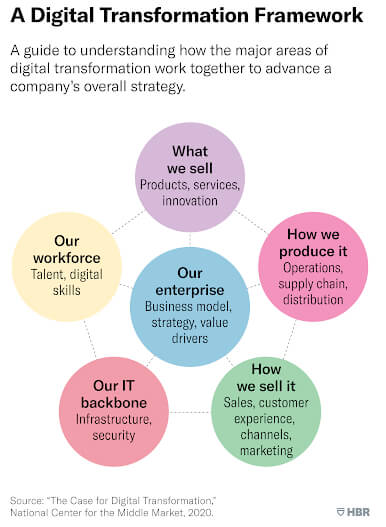 1-800-805-5783
1-800-805-5783 
The middle market has faced unprecedented challenges over the past several quarters, and the COVID-19 pandemic has significantly impacted businesses of all sizes. The National Center for the Middle Market (NCMM) has been monitoring the performance and sentiments of companies with annual revenues between $10 million and $1 billion since 2012. While average revenue growth for middle-market companies has increased in 2021, there is a clear divide in the recovery. While 45% of companies reported revenue growth of 10% or more, another 34% experienced flat or declining revenue.
The recovery has been uneven, with many companies still facing ongoing challenges. According to the NCMM, 51% of middle-market leaders cite employee communications, engagement, and productivity as the most difficult aspects of running their businesses in the current environment. Additionally, 45% reported issues with customer engagement. These challenges vary by industry, with healthcare companies struggling with employee engagement and construction companies finding it difficult to engage customers in new and beneficial ways.
Middle-market companies need a clear digital vision to thrive in the face of an uneven recovery and ongoing challenges. According to data from the NCMM, companies with a clear, comprehensive digital vision that guides strategic decisions grow 75% faster on average than their less digitally sophisticated peers. However, only 46% of middle-market companies have a digital roadmap built into their strategy.
The pandemic has accelerated investment in various technologies to address operational areas such as cybersecurity, customer engagement, and communications. However, executives’ perceptions of their own businesses’ digital maturity do not necessarily align with the investments made. While 52% of leaders consider digitization important or extremely important, only 35% consider themselves advanced or ahead of their peers.

To help middle-market companies navigate the process of digital transformation, the NCMM has developed a framework that focuses on five interconnected activities:
This framework provides a guide for companies to assess and improve their digital maturity across these five fronts.

Let’s look at a couple of the biggest challenges faced by the middle market and how focusing on “how we sell it (customer engagement)” and “our workforce (employee engagement)” helps address them.
Regarding customer engagement, customer experience, lead generation, and marketing tools are top priorities for middle-market companies. To progress in these areas, companies should prioritize integrated multichannel marketing and sales, develop functional websites that connect customers with employees, increase online interaction through various digital touchpoints, and use technologies that support the sales force, such as CRM systems and social media. The goal is to create an omni-channel, end-to-end digital experience on all platforms and channels.
Middle-market companies face a challenge in accessing, attracting, and retaining talent with the right digital skills. To address this, companies should invest in people with specific digital expertise, adopt the latest technology and digital processes, take a strategic approach to realigning the workforce by contracting activities to outside specialists, and provide career training and development with clear career paths. Investing in employees with digital skills and empowering them with the right tools and processes is crucial for successful digital transformation.
Resource constraints, budget issues, lack of time, and internal resources are common obstacles middle-market companies face when it comes to digital transformation. IT spending is often focused on daily operations and cybersecurity, leaving limited resources for digital transformation initiatives. Companies need to address these obstacles by prioritizing investments in digital technologies, allocating budgets and resources, and adopting a strategic approach to implementation.
Middle-market companies face unique challenges in the digital transformation journey. The key to thriving in an uneven recovery and overcoming ongoing challenges is to have a clear digital vision that guides strategic decisions. By focusing on customer and employee engagement, investing in the right digital technologies, and adopting a comprehensive framework for digital transformation, middle-market companies can position themselves for growth and success in the digital age.
This post is inspired by a similar topic in Harvard Business Review.